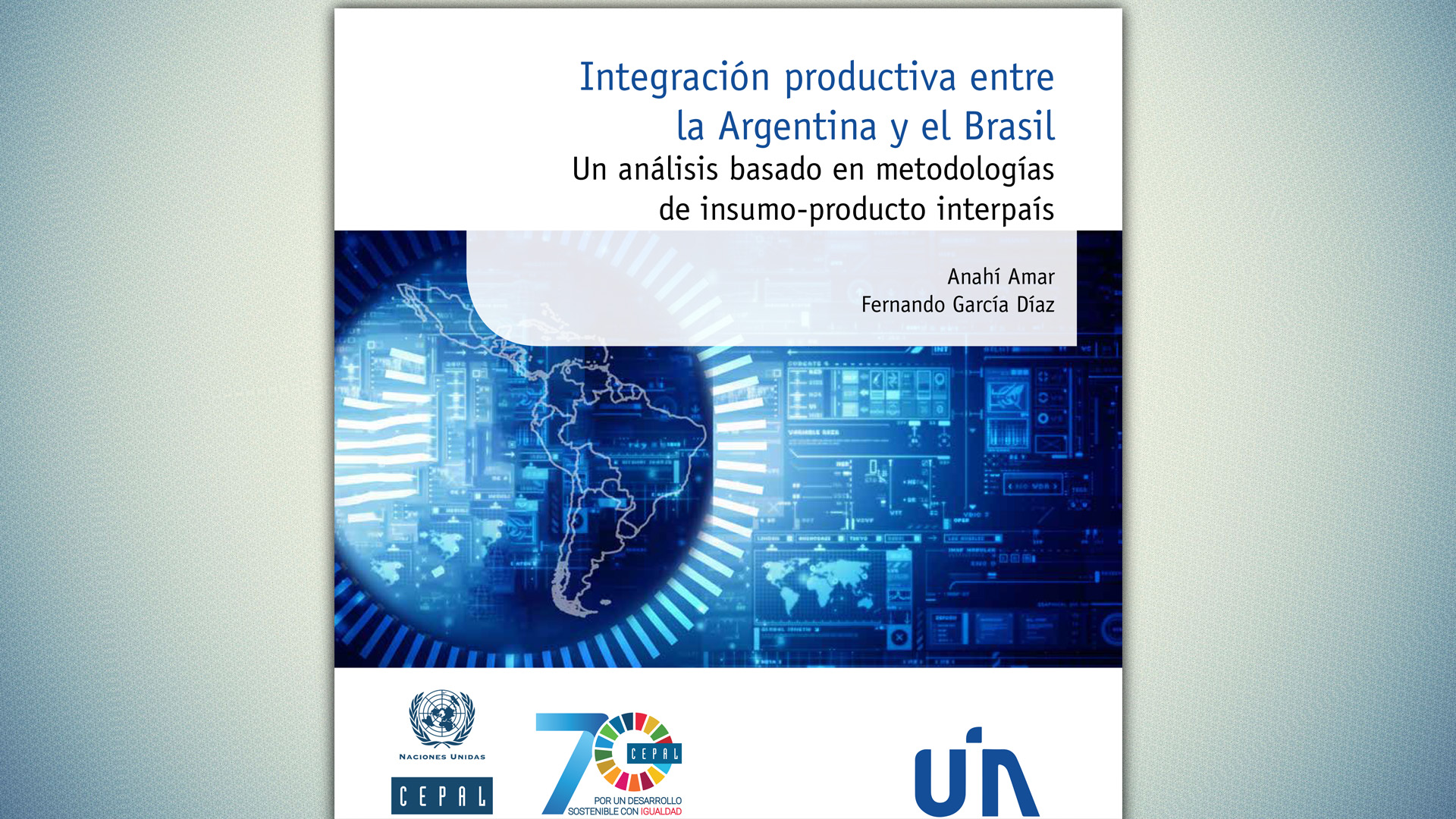New Publication by ECLAC Analyzes Productive Integration between Argentina and Brazil
Work area(s)
The study was done in the framework of technical cooperation activities carried out jointly by the Argentine Industrial Union (UIA) and the United Nations regional organization.

A new document published recently by the Economic Commission for Latin America and the Caribbean (ECLAC) analyzes productive integration between Argentina and Brazil through the information provided by the inter-country input-output matrices of the Organization for Economic Cooperation and Development (OECD).
The study, entitled Productive Integration between Argentina and Brazil: An Analysis Based on Inter-Country Input-Output Methodologies (available only in Spanish), presents the results of a technical cooperation project carried out by ECLAC’s Buenos Aires Office and the Argentine Industrial Union (UIA).
The methodology utilized in the document allowed for identifying the pattern of vertical specialization generated between Argentina and Brazil, how it affects the increase in production and exports from one economy to another (multiplier effects), and how the advance of Asian economies is manifested in the composition of trade between the two countries, among other aspects relevant to the bilateral relationship.
The analysis covers the 1995-2011 period and reveals that since the creation of the Southern Common Market (MERCOSUR), Argentina tended to specialize in the exportation of final goods (58.1% of bilateral exports) and Brazil as the provider of intermediate goods (which represent 56.6% of its sales). Partly as a consequence of this, the multiplier effect associated with bilateral exports is greater in the case of Brazil than in that of Argentina.
Another of the study’s findings refers to the impact of inputs of Asian origin, particularly from China, in the pattern of bilateral specialization. The participation of inputs of Asian origin made more significant headway in Brazilian production – ultimately representing more than one fourth of all foreign content – than in Argentine production, where the Asian portion reached 14.5% of total foreign content. In Brazil, this tended to displace imports coming from Argentina (which went from accounting for 6.3% of foreign content to 3.2%). In Argentina, in contrast, the increased importation of Asian inputs did not displace Brazilian imports, which even expanded in the period under consideration (from 14.7% to 21.5% of total foreign content).
The study thus indicates that the bilateral relationship between Argentina and Brazil constitutes – in those aspects addressed and beyond certain asymmetries – a case of virtuous productive complementarity, in activities of greater relative technological complexity, more centered in the manufacturing sector than in activities of extractive or agricultural origin, which prevail in both countries’ exports to third destinations.
That said, from the point of view of taking advantage of economies of scale and specialization, there appear to be more challenges than achievements made so far, the report adds. The difficulties manifested in bilateral integration within regional or global value chains require the establishment of a more coordinated and effective agenda to, on the one hand, broaden the scope of the bloc’s trade to the rest of the world and, on the other, ensure that this occurs by positioning it in advantageous segments of global value chains.
For this to happen, the document suggests that each country position industrial and technological policies as a central component of their economic policy, as ECLAC has historically sustained.
Related content
Subregional headquarter(s) and office(s)
Type
Country(ies)
-
Argentina
-
Brazil
Related link(s)
Related project(s)
Contact
Oficina de la CEPAL en Buenos Aires
- cepalbue@cepal.org
- (54 11) 5436 4000